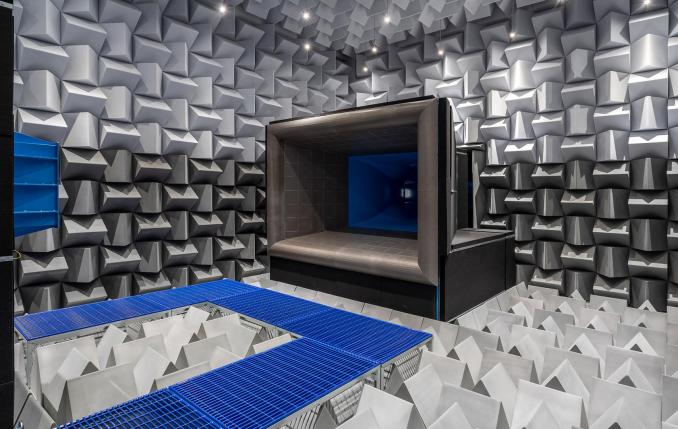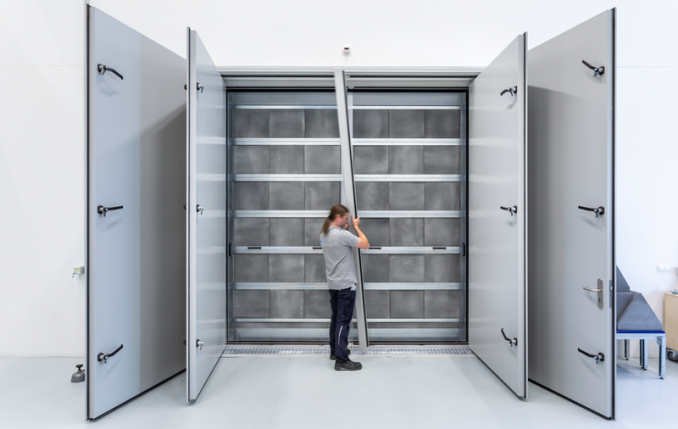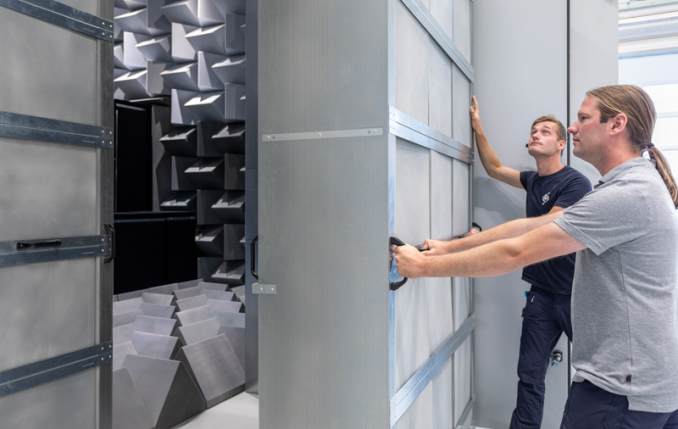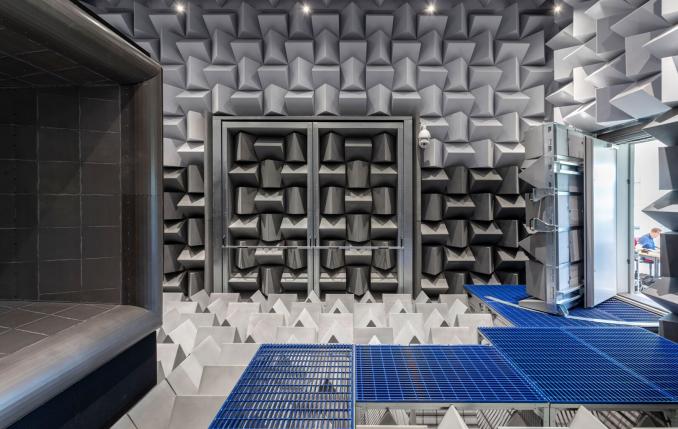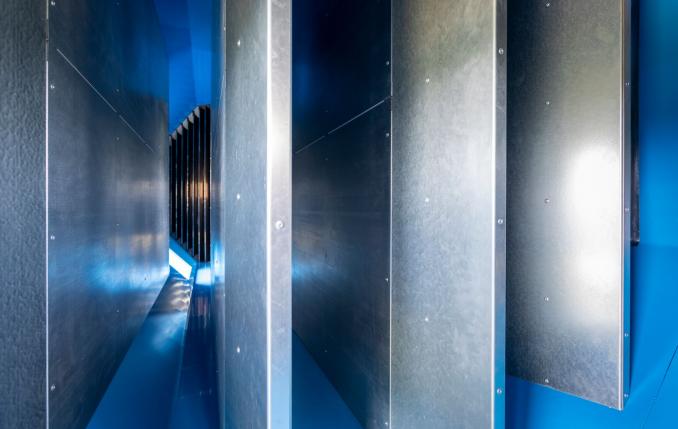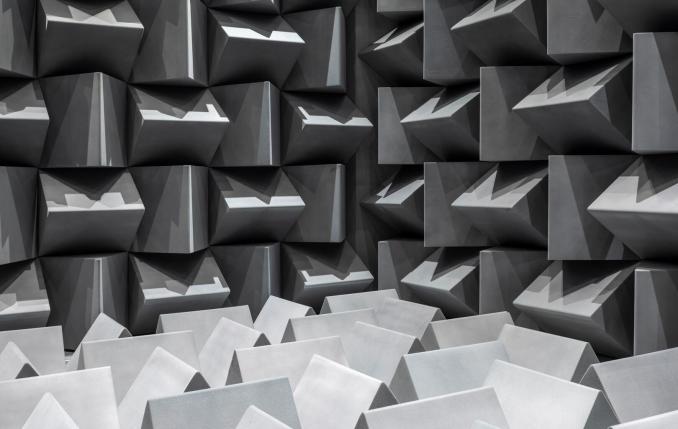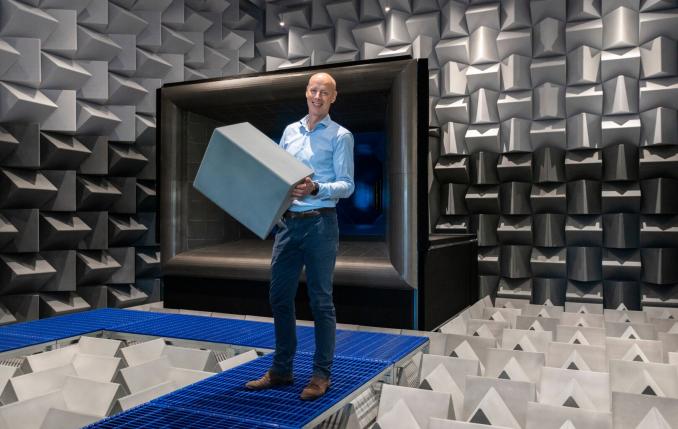Merford is less accessible during the holiday season. If you have a query during these days, please let us know at info@merford.com.
NLR Marknesse
Merford develops anechoic chamber for new facility at Netherlands Aerospace Centre
We owe much of our prosperity to aviation, a technology that connected continents and turned the dream of being on the other side of the world within 24 hours into reality. In 2020, with the sector still growing and technology developing at a remarkable speed, extensive research remains the key to progress. In the Netherlands, this research is concentrated at the Netherlands Aerospace Centre (NLR), which boasts a wide range of research disciplines and modern testing facilities. In its new building in Marknesse, NLR performs research into aircraft noise and other areas. Its anechoic chamber is located in a specially equipped area used to analyse and locate sound sources. The acoustic measures were designed by Merford, who worked closely with the team at NLR.
-
Lucht- en ruimtevaartcentrum -
Industrial sector
Netherlands Aerospace Centre
‘Netherlands Aerospace Centre’ adorns the entrance of the institute’s brand-new building in the Noordoostpolder. With its predecessor founded back in 1919, the now royal institute can claim a history spanning over 100 years. Its original mission was to increase safety in military aviation, but civil aviation was soon added to the mission. The institute still promotes the safety, efficiency, and sustainability of aerospace for and with a wide variety of actors in the sector. It sees itself as the connector between science, business, and government.
Anechoic chamber
Wind tunnel tests are carried out in one of the halls in the building. The room has two wind circulation circuits for sound tests, a ‘flow duct facility’ and an ‘acoustic wind tunnel’, which can create a realistic setting in terms of air velocity and flow. One of the circuits carries the air at a speed of up to 110 metres per second through a 432-m3 anechoic chamber, so the team can test rotor blades, engine casings, and other equipment. This room has been designed to minimize sound reflection, a requirement for reliable measurement results in many types of acoustic research. Anechoic chambers are also called ‘dead rooms’, as every sound disappears almost immediately. Standing in one is a truly eerie experience: once you’ve spent some time in the room, free of sound interference, you’ll start to hear your own heartbeat and sometimes even hear yourself blink.
Partnership
‘This is mainly due to the hundreds of wedges of the sound-absorbent melamine foam Flamex,’ explains Stef Zoeteman, Sales Manager at Merford. ‘We use a smart, low-maintenance system to attach these pyramid-shaped objects to the walls and ceiling. As the ones on the floor are free-standing, the space can be easily reconfigured if the team need to install a new test rig.’
Joost Hakkaart, Head of Vertical Flight and Aeroacoustics at NLR, is satisfied with the final result and the lead-up to it. ‘We started working with Merford for our new aero-acoustic wind tunnels as early as 2016, when we were still preparing the investment application for the new facility. From the start, Merford worked alongside us to design a technically sound and cost-effective solution. The work involved not only the eye-catching anechoic space but also splitter attenuators for both wind tunnels. We’re most impressed by the quick installation time, which was mainly thanks to the good engineering. Having become fantastic partners over the course of the project, we’ve also decided to award more recent acoustic improvements to Merford.
If you’d like to see more of the anechoic chamber, the NTR programme De Kennis van Nu (Today’s Knowledge) visited NLR’s room – presenter Dirk de Bekker got to experience the true meaning of complete silence. Watch the episode (in Dutch) here.
